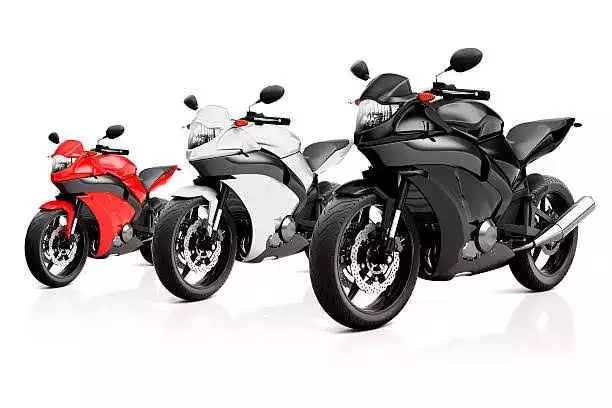 Motorbike companies have been on the pulse. They have launched more accessible superbikes catering to specific needs, allowing riders to upgrade gradually.
Motorbike companies have been on the pulse. They have launched more accessible superbikes catering to specific needs, allowing riders to upgrade gradually. There used to be a time when Sunday morning rides perched atop expensive motorcycles was the pursuit of the few uber-wealthy.
Those days are slowly disappearing in the rearview mirror. After years of trudging along in second gear, India’s superbike scene is maturing and moving into a higher cog, finally.
Fuelled by increase in disposable income, a steady stream of launches, and affordability enabled by easy access to credit, there are a lot more higher cubic capacity (cc) bikes being sold in India now, to a larger number of folks than before.
Sales of motorcycles above 600cc are zooming, touching 28,036 units for January to September period, according to Jato Dynamics data.
Premium dealerships report buyers are increasingly young professionals in their 30s, often from tech and finance, who view superbikes as both a passion and a statement, said Ravi Bhatia, president, Jato Dynamics.
Motorbike companies have been on the pulse. They have launched more accessible superbikes catering to specific needs, allowing riders to upgrade gradually.
A Higher gearA major trigger for the uptick? Buyers shifting from being casual riders to adventure enthusiasts, willing to spend on higher performance. Simultaneously, the country’s motorcycle-as-a-hobby culture is moving past ‘ownership’ as the currency, to something more experiential.
India’s bikers are now looking for horses for courses—specific motorcycles that can provide specific thrills, whilst reflecting their personalities. No longer content with just riding for leisure, they’re seeking out bikes that promise adventure, community, and unforgettable experiences.
“It’s no longer about parking an expensive bike in your garage,” says Kochi-based Edwin Punoose. “Today’s superbikers are serious about their craft – investing in training, safety gear, and building genuine connections within the community,” says this 55 year old, who is awaiting delivery of Harley Davidson Forty Eight.
Few embody the shift more than Sanket Raykar. When he bought his first motorcycle aged 18, it was a budget-friendly, entry-level machine. At 30, he found himself in a Ducati dealership, eyeing the 959 Panigale. After getting a taste of a track motorcycle, he upgraded to BMW GS Adventure Tourer 1250cc, and followed it up recently with a Ducati Hypermotard 1000cc.
“I didn’t think I’d be here so soon,” Raykar, now 38, admits. “But after attending a few community rides and seeing what these bikes can do, I just had to upgrade... It’s about the different genres, the experience, the journey,” says Raykar, who just came back from a tour of Italy.
That attitude is driving upgrades. Mayank Khatan (39), recently upgraded from a Ducati Monster 821 to a BMW GS 1250. “Easier to cruise on the highways with these refined higher cc bikes,” says Pune-based Khatan, who does frequent road trips from Pune to Goa, Surat and Bhopal.
“The expectations and preferences are different as we move from one product segment to another,” said Vikram Pawah, president and CEO, BMW Group India.
Ducati’s upward trajectory in the 500cc+ segment similarly reflects the demand for premium of ferings. “We have achieved double-digit growth in 2024, surpassing our internal targets and market expectations,” said Bipul Chandra, MD, Ducati India.
Riding in sync It’s a new era for the biking world, one where passion and luxury meet the open road. Brands like BMW, KTM, Ducati and others are recognising this shift and responding with tailored offerings, exclusive events, and immersive community rides.
“Our customers are a regular part of BMW Motorrad safaris, weekend escapes, training and track days. In 2024 alone, over 72 expeditions will be held through safaris and weekend escapes,” adds Pawah, pointing out that demand for BMW Motorrad bikes from the 900cc–1800cc segment has increased by around 140%, in last five years.
“We see more track days where these motorcycles are used on a closed racing circuit in safer conditions. There is huge growth in adventure travelling,” said Baljit Parmar, India representative of KTM Motorcycles, which is currently running a 14-day tour in Nepal. “It was sold out within hours of being announced,” said Parmar.
Several brands offer professional training programmes to ensure safe riding. BMW Motorrad runs its own motorcycle training programmes across the country.
KTM has also invested in a motocross training facility in Bengaluru. It also has a comprehensive programme called KTM Pro-XP, which curates experiences that help customers understand their motorcycles better and receive training to be safer riders, says Parmar.
Ducati has run training programmes on the racetrack, and at offroad adventure parks. For 2025, it plans to roll out DRE Road Academy across five cities, teaching riders the fundamentals of riding a superbike, making them safer and more confident on the road.
“Our Great Himalayan Dream Tour was a standout initiative this year, bringing not only members of Ducati Owners Club (DOC) Pune to the Umling La Pass, the highest motorable road in the world but also blending adventure, rider marshals, backup services,” said Chandra.
Geared-up!As the super biking culture grows, brands are introducing high-quality riding gear tailored to Indian consumers. Companies like Ducati, BMW Motorrad, KTM, Harley-Davidson all sell premium gears including jackets, helmets and boots. Riders are also investing in accessories.
The accessories in demand reflect the core values of these brands. Take for instance, the Akrapovic for Ducati exhaust systems (meant for track use only), which while improving performance, adds a distinctively throaty exhaust note.
As the sun sets on another weekend of riding, it’s clear that India’s superbike culture is now a lifestyle that demands dedication, rewards passion, and builds lasting bonds – one kilometre at a time.
